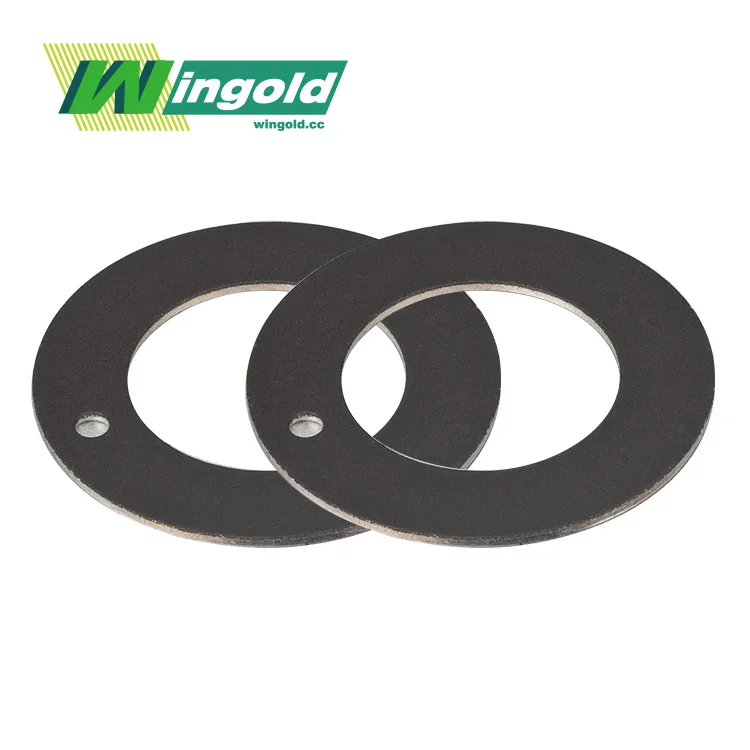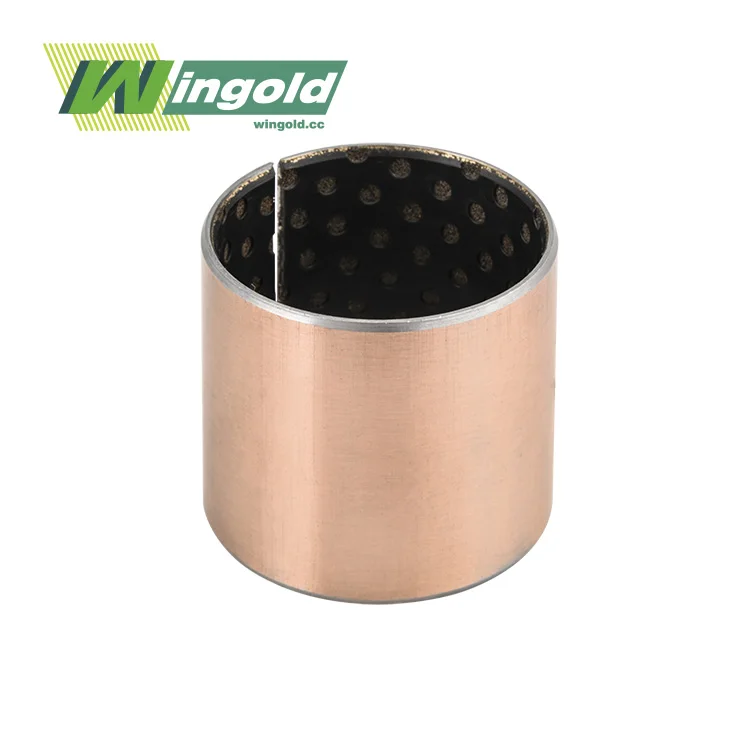Comprehending the Role of Oil Pump Bushings in Automotive Engines
Oil pump bushings are integral components of an automotive engine's lubrication system. These cylindrical bearings support the oil pump shaft, allowing it to rotate smoothly while maintaining proper alignment. The primary functions of oil pump bushings include:
Facilitating Smooth Rotation
Oil pump bushings provide a low-friction surface for the pump shaft to rotate within. This smooth rotation is essential to ensure efficient oil circulation throughout the engine, keeping components well-lubricated and preventing overheating or excessive wear. Typically manufactured from durable materials such as bronze or babbitt, these bushings are designed to offer excellent resistance to wear and prolonged service life. Their inherent self-lubricating properties further enhance performance by reducing the risk of friction-related damage, making them critical to engine reliability.
Maintaining Proper Clearance
The precise fit of oil pump bushings is vital for maintaining the correct clearance between the pump shaft and its housing. This clearance ensures consistent oil pressure within the system, which is necessary to deliver lubrication to vital engine parts. Too much clearance can cause oil leakage and loss of pressure, while too little can result in friction and damage. By ensuring proper tolerances, bushings play an integral role in preventing costly engine wear and premature failures.
Absorbing Vibration and Reducing Noise
Beyond lubrication support, oil pump bushings also function as vibration dampeners within the system. They absorb and cushion operational vibrations generated by the oil pump, helping to minimize harsh knocking or humming noises. This vibration control not only reduces noise levels but also helps protect nearby engine components from long-term stress and fatigue. By maintaining smoother and quieter operation, bushings enhance driving comfort and contribute to prolonging the overall service life of the engine.
Signs of Worn or Failing Oil Pump Bushings
Recognizing the symptoms of deteriorating oil pump bushings is crucial for timely maintenance. Some common indicators include:
Unusual Engine Noises
As oil pump bushings wear, they may allow for increased movement of the pump shaft. This excessive clearance can cause the shaft to rattle inside the housing, leading to a knocking or metallic sound that is often most noticeable during engine startup or under heavy load. These noises are early warning signs of bushing deterioration. If left unchecked, the vibration and looseness can escalate, potentially causing misalignment, further component wear, or even complete pump failure over time.
Fluctuating Oil Pressure
Worn bushings disrupt the balance of oil flow and pressure within the system. As the clearance widens, oil may escape or circulate inconsistently, leading to irregular pressure readings on the dashboard gauge. Drivers may observe sudden drops or spikes in oil pressure, sometimes triggering a warning light. Such fluctuations signal that the pump is no longer operating efficiently. If ignored, poor lubrication may result, endangering critical components like bearings, camshafts, and pistons, which all depend on stable oil pressure.
Increased Oil Consumption
When bushings wear significantly, gaps between the shaft and housing may allow oil to leak into unintended areas. This leakage not only reduces overall oil levels but also forces the engine to consume more oil than usual. As lubrication becomes inconsistent, heat and friction within the engine increase, heightening the risk of damage to vital parts. Left unresolved, this condition can accelerate wear on bearings, seals, and pistons, resulting in costly repairs and decreased long-term engine reliability.
Maintenance Best Practices for Oil Pump Bushings
To ensure the longevity and optimal performance of oil pump bushings, consider the following maintenance tips:
Regular Inspection
Incorporate visual inspections of the oil pump and its bushings into your routine maintenance schedule. During these checks, carefully observe the condition of the bushings and the pump shaft for early signs of deterioration. Look for visible wear patterns, scratches, or scoring that may indicate friction or misalignment. Discoloration could suggest overheating caused by inadequate lubrication. Detecting excessive shaft movement or looseness should be taken seriously, as these are warning signs of failure. Prompt corrective action prevents minor issues from escalating into costly repairs.
Timely Replacement
Replacing oil pump bushings at the correct intervals is vital for engine reliability. Follow the manufacturer’s maintenance schedule, but if wear, cracks, or shaft looseness appear, replacement should occur sooner. Using durable, precision-engineered components from trusted suppliers like Wingold Bearing ensures consistent performance and extends the service life of the pump. High-quality parts help maintain proper clearances, reduce friction, and enhance oil circulation. A timely replacement prevents damage to surrounding components, lowers repair costs, and helps keep the engine running smoothly.
Proper Oil Maintenance
Oil quality plays a central role in protecting oil pump bushings. Always use the correct grade and viscosity recommended by the vehicle manufacturer to ensure effective lubrication. Regularly check oil levels, as low oil can cause bushing failure through increased friction and heat. Scheduled oil changes remove contaminants, such as dirt and metal particles, which may accelerate wear. Clean oil provides a consistent lubricating film between the bushing and shaft, reducing surface contact and ensuring the pump operates efficiently under all conditions.
Address Related Issues Promptly
Oil pump bushings can experience accelerated wear if surrounding engine problems are neglected. Issues such as worn crankshaft bearings, a warped oil pan, or oil leaks can create additional stress on the pump assembly. Excessive vibration or uneven load distribution may further weaken the bushings, leading to premature failure. Addressing these issues promptly helps maintain a balanced operating environment, ensuring the oil pump functions without unnecessary strain. Preventive action protects not only the bushings but also the engine’s long-term reliability.
Conclusion
Oil pump bushings are critical components in automotive engines, ensuring proper lubrication and smooth operation. By understanding their role and implementing proper maintenance practices, vehicle owners can extend the life of their engine and avoid costly repairs. Regular inspections, timely replacements, and using high-quality parts are key to maintaining optimal performance. For those seeking reliable oil pump bushing solutions, Wingold Bearing offers a range of precision-engineered options designed to meet the demanding requirements of modern automotive engines. To learn more about our products or for expert advice on oil pump bushing maintenance, please contact us at info@wingold.cc
.
FAQ
How often should oil pump bushings be replaced?
The replacement interval for oil pump bushings varies depending on the vehicle make and model. Generally, it's recommended to inspect them during major engine services and replace them if wear is evident or as specified in the vehicle's maintenance schedule.
Can I replace oil pump bushings myself?
While it's possible for experienced DIY mechanics to replace oil pump bushings, it's often best left to professionals due to the precision required and the potential for engine damage if done incorrectly.
How do oil pump bushings affect fuel efficiency?
Properly functioning oil pump bushings contribute to efficient engine operation, which can positively impact fuel efficiency. Worn bushings may lead to increased friction and reduced engine performance, potentially decreasing fuel economy.




